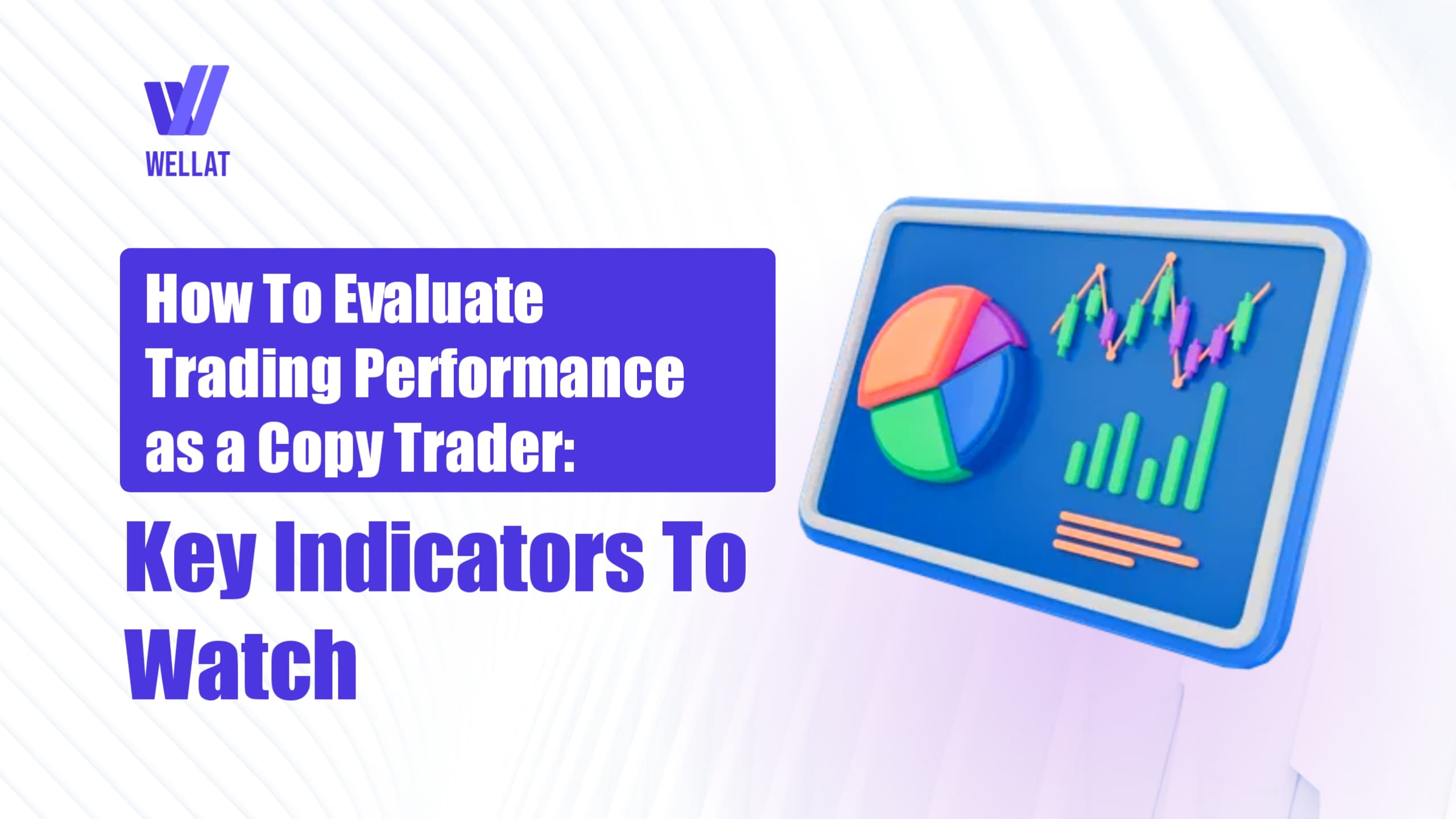How to Evaluate Trading Performance as a Copy Trader
 Michael
Michael Table of contents

Evaluating your trading performance as a copy trader is essential to ensure you're following the right traders and making profitable decisions. Here are some key steps to effectively evaluate your copy trading performance:
1. Analyze Key Performance Metrics
Monitoring essential performance metrics helps you understand how well your copy trading strategy is working:
Return on Investment (ROI): Measure the overall profitability by calculating the percentage gain or loss relative to your initial investment. This gives a clear indication of your trading success.
Win Rate: Assess the percentage of profitable trades out of the total trades. A higher win rate suggests that the traders you're copying are making successful trades.
Drawdown: Evaluate the largest peak-to-trough decline in your portfolio. A lower drawdown indicates better risk management and portfolio stability.
Risk/Reward Ratio: Compare the average profit of winning trades to the average loss of losing trades. A higher ratio means your profitable trades outweigh your losses, enhancing overall performance.
Regularly tracking these metrics helps you identify trends and make informed adjustments.
2. Assess the Performance of Lead Traders
The success of your copy trading heavily depends on the traders you follow:
Historical Performance: Review the past performance of lead traders, focusing on consistency, profitability, and drawdowns. Consistent success over time is a good indicator of a reliable trader.
Trading Style and Strategy: Understand the trading style (e.g., long-term vs. short-term, aggressive vs. conservative) and ensure it aligns with your investment goals and risk tolerance.
Risk Management Practices: Evaluate how lead traders manage risk, including their use of stop-loss orders, position sizing, and diversification. Effective risk management is crucial for sustainable performance.
Choosing the right traders based on these criteria ensures you replicate successful strategies.
3. Utilize Platform Tools and Resources
The trading platform you use should offer robust tools to help you evaluate performance:
Performance Analytics: Use the platform’s analytical tools to track the performance of your copied trades and the lead traders. Look for features like detailed performance charts, metrics, and comparison tools.
Risk Management Features: Ensure the platform provides options to set limits on investment amounts per trader and implement stop-loss thresholds to protect your capital.
User Reviews and Ratings: Consider the reviews and ratings of lead traders from other users on the platform. This community feedback can provide additional insights into the reliability and performance of traders.
A platform with comprehensive evaluation tools enhances your ability to make data-driven decisions.
4. Diversify Your Copy Trading Portfolio
Diversification can reduce risk and improve performance:
Follow Multiple Traders: Diversify by copying multiple successful traders with different strategies and asset classes. This helps mitigate the impact of any single trader's poor performance.
Spread Across Asset Types: Invest in various asset types (e.g., stocks, forex, commodities) to balance risk and leverage different market opportunities.
Periodic Rebalancing: Regularly review and rebalance your portfolio based on the performance of lead traders and market conditions. Adjust allocations to favor better-performing traders.
Diversification helps achieve more stable and consistent returns.
5. Regular Performance Review and Adjustment
Continuous evaluation and adjustment are crucial for maintaining and improving performance:
Monthly and Quarterly Reviews: Conduct regular reviews of your trading performance, comparing actual results against your goals and benchmarks.
Identify Weaknesses: Analyze underperforming trades and identify patterns or reasons for losses. This helps in making informed decisions to improve future performance.
Adapt to Market Changes: Stay informed about market trends and news that might affect your copied trades. Be ready to adjust your strategy and trader selections based on changing market conditions.
Regular reviews and adjustments help you stay on track and optimize your copy trading performance.
By following these steps, you can effectively evaluate your trading performance as a copy trader. Consistent monitoring and strategic adjustments will help you make informed decisions, maximize profits, and achieve your copy trading and financial goals.
Subscribe to my newsletter
Read articles from Michael directly inside your inbox. Subscribe to the newsletter, and don't miss out.
Written by
